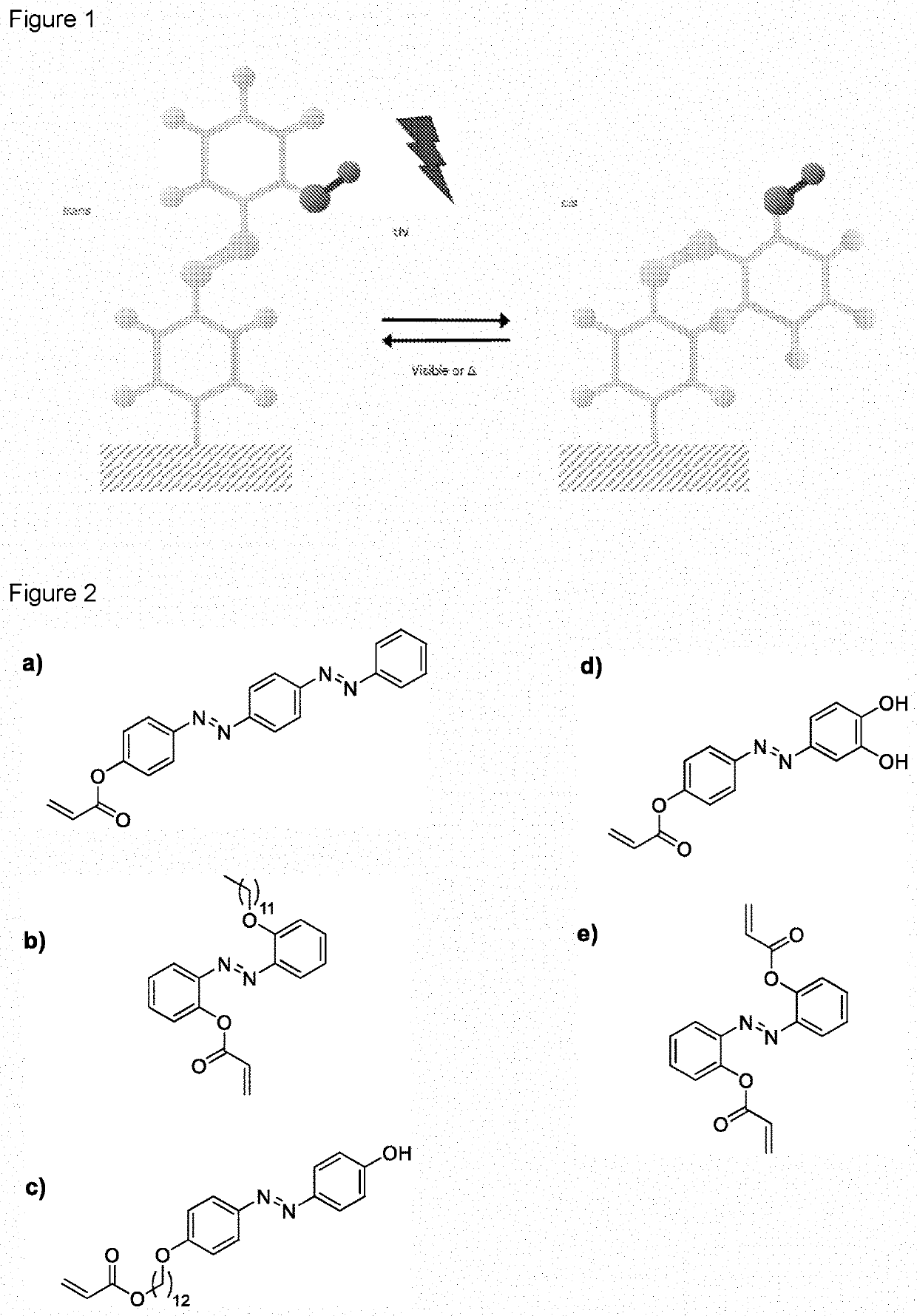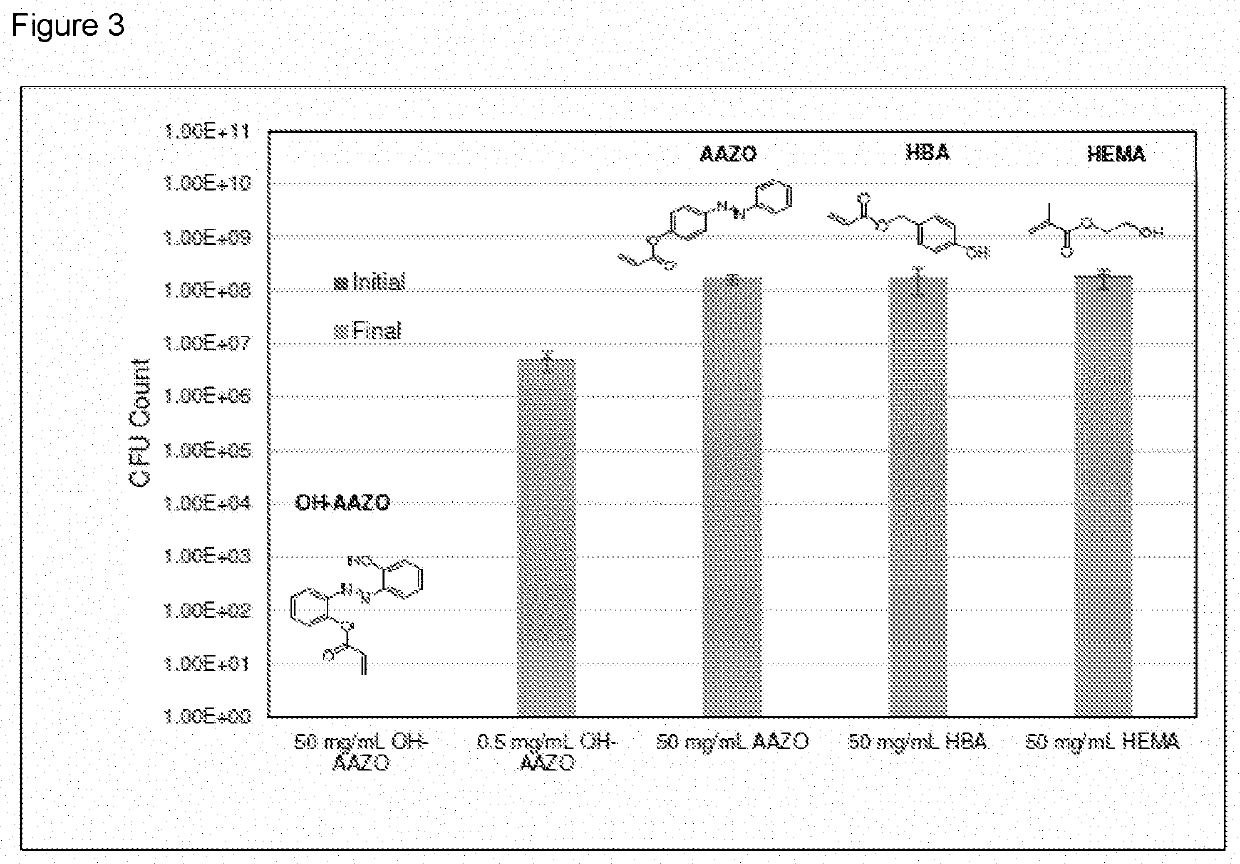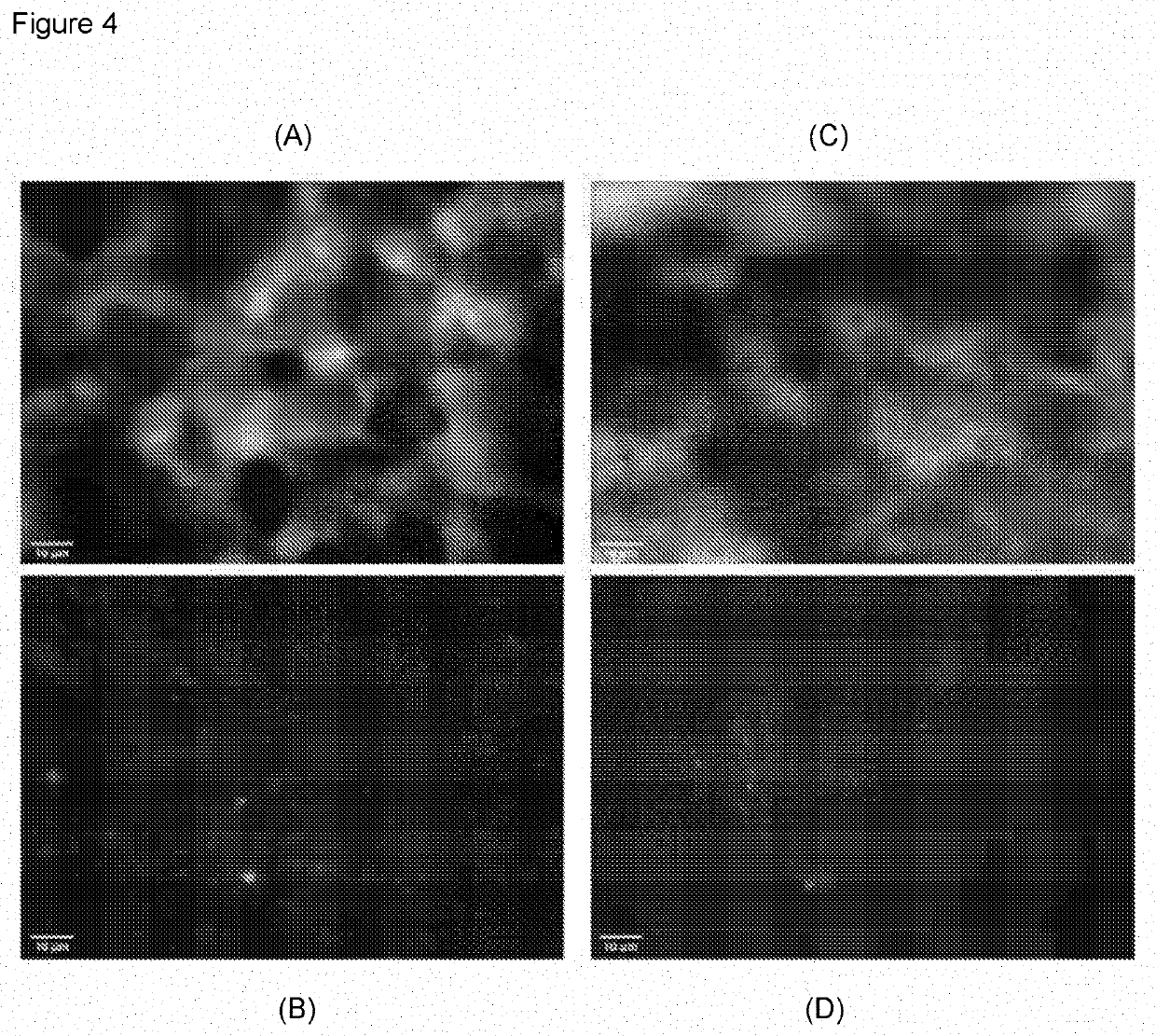Antimicrobial azo compounds and uses thereof
a technology of azo compounds and compounds, applied in the field of azo compounds, can solve the problems of high cost of chronic disease treatment, severe pain, and malnutrition, and achieve the effect of increasing the antimicrobial properties of a variety of materials
- Summary
- Abstract
- Description
- Claims
- Application Information
AI Technical Summary
Benefits of technology
Problems solved by technology
Method used
Image
Examples
example 1
[0122]In this Example, polymeric substrates were prepared and coated with azobenzene monomers to determine their ability to repel S. mutans biofilms. The coatings were prepared on a model substrate that was designed to emulate conventional polymethacrylate composite resins used in oral restorative materials.
[0123]The polymeric substrates were prepared by mixing 54 wt % methyl methacrylate (MMA), 30 wt % polymethylmethacrylate (PMMA, MW ˜35 k), and 16 wt % tetraethylene glycol dimethacrylate (TEGDMA) at 70° C. for 2 hr. After mixing, 1 wt. % azobisisobutyronitrile (AIBN) was added to the formulation as an initiator and mixed.
[0124]The mixed formulation was added to circular molds (diameter=6.5 mm) cut from a strip of rubber (thickness=0.9 mm) and pressed between two glass microscope slides. The mold was clamped together and thermally cured at 80° C. for 1.5 hr.
[0125]The polymeric substrates were coated as follows. Coating solutions were prepared having the following monomer concentra...
example 2
[0132]In this Example, detachment of S. mutans from a polymeric substrate coated with a 50 mg / mL OH-AAZO solution was evaluated. Four conditions were evaluated. The first is where the polymeric substrate is coated with OH-AAZO and exposed to light to produce a photofluidization effect due to the rapid trans cis isomerization (Azo, light or AL). The second is where the polymeric substrate is coated with OH-AAZO and not exposed to light (Azo, no light or ANL). The third is where the polymeric substrate is not coated with OH-AAZO and is exposed to light (no Azo, light or NAL). The fourth is where the polymeric substrate is not coated with OH-AAZO and is not exposed to light (no Azo, no light or NANL).
[0133]The results of the tests are shown in FIG. 5-FIG. 7. The AL sample showed no growth over 48 hr. The ANL sample showed minimal growth for the first 33 hr, but by t=48 hr, there was some minimal biofilm growth. This suggests that the presence of OH-AAZO group inhibits growth even in th...
example 3
[0134]In this Example, the cytotoxicity of polymeric substrates coated with 0.5 mg / mL OH-AAZO and 50 mg / mL OH-AAZO in the manner described in Example 1 were tested using L929 mouse epithelial cells. The following six samples were prepared: polymeric substrate coated with 50 mg / mL OH-AAZO, polymeric substrate coated with 0.5 mg / mL OH-AAZO, uncoated polymeric substrate, positive control, negative control, and an empty well. All coatings were spin coated. All samples were run in triplicate.
[0135]The cells were grown on substrates for 100 hr with media replacement when necessary. L929 conditions: Passage 3. Initial concentration of cells: 1.67×104 cells / mL.
[0136]Methods and Assumptions:[0137]Wells containing MTT product were analyzed at 570 nm.[0138]OD570 values were corrected based on OD570 values of wells containing MTT product+other reagents only (no cells).[0139]OD570 values were corrected based on OD570 values of wells containing MTT product+other reagents only (no cells).[0140]Ass...
PUM
| Property | Measurement | Unit |
|---|---|---|
| wavelengths | aaaaa | aaaaa |
| concentration | aaaaa | aaaaa |
| concentrations | aaaaa | aaaaa |
Abstract
Description
Claims
Application Information
 Login to View More
Login to View More - R&D
- Intellectual Property
- Life Sciences
- Materials
- Tech Scout
- Unparalleled Data Quality
- Higher Quality Content
- 60% Fewer Hallucinations
Browse by: Latest US Patents, China's latest patents, Technical Efficacy Thesaurus, Application Domain, Technology Topic, Popular Technical Reports.
© 2025 PatSnap. All rights reserved.Legal|Privacy policy|Modern Slavery Act Transparency Statement|Sitemap|About US| Contact US: help@patsnap.com



